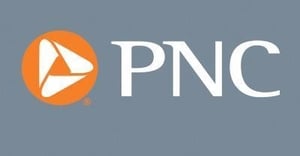 "Cautiously Optimistic" Outlook
"Cautiously Optimistic" Outlook
- There was a slight increase in economic activity in the late winter and early spring, according to the latest Beige Book from the Federal Reserve. The outlook is “cautiously optimistic.”
- Employment increased slightly with slowing wage growth, and the labor market is moving into better balance.
- Inflation pressures are easing.
- PNC’s baseline forecast is for continued expansion in 2024 but with slower growth.
- With easing inflation, the FOMC is likely to cut the fed funds rate a couple of times in the second half of this year.
According to the latest Beige Book U.S. “economic activity expanded slightly, on balance” from late February to early April. The outlook was “cautiously optimistic.”
Overall consumer spending barely increased, but results were mixed across districts. Several districts reported softness in discretionary spending, with auto sales mixed. Tourism growth was modest, and again results varied across districts.
Overall manufacturing activity was down slightly, with only three districts reporting growth. There was slight growth in nonfinancial services, with bank lending activity flat. There was a small increase in residential construction and a pickup in home sales. But nonresidential construction was flat, with a small decline in commercial real estate leasing activity.
There was a slight increase in employment. Nine of the twelve districts reported “very slow to modest increases,” with flat employment in the other three. There were improvements in labor supply and the quality of applicants; employee retention also improved. But shortages remained a problem in particular industries and occupations, such as skilled machinists and in hospitality services. Wage growth was “moderate” in eight districts, and “slight to modest” in the remaining four. Multiple districts reported that wage growth had returned to its long-run average. The outlook was for modest job growth and a further slowing in wage growth.
Price increases were modest on average. There were shipping delays due to the Baltimore bridge collapse and conflict in the Red Sea, but no indication of higher prices. Commodity price movements were mixed, but one-half of the districts reported an increase in energy prices. A number of contacts mentioned increases in insurance premiums. Businesses reported a reduced ability to pass along higher prices to customers, resulting in lower profit margins. Contacts generally expected “that inflation would hold steady at a slow pace moving forward.” However, some manufacturers reported increased upside risks to inflation.
Five districts reported modest growth (Boston, Cleveland, Atlanta, Kansas City, and Dallas), while another five reported slight growth (Richmond, Chicago, St. Louis, Minneapolis, and San Francisco). Two reported flat conditions (New York and Philadelphia), while none reported contraction.
The most recent Beige Book is consistent with an economy that continues to expand, but at a slower pace than in the second half of 2023. Consumers are increasing their spending, but there are indications that at least some are getting stretched thin. The labor market remains solid but is moving into better balance between supply and demand compared to the first few years of recovery following the pandemic. Wage growth is slowing toward its pre-pandemic pace. Inflation remains elevated, but is easing, and contacts expect a further slowing in the near term as wage pressures continue to abate.
The Beige Book is consistent with PNC’s forecast for slower but still-solid economic growth in 2024, as well as a further easing in inflation. The big increases in short- and long-term interest rates over the last couple of years continue to restrain economic activity. But the solid labor market and strong consumer and business balance sheets remain supports for near-term growth.
If inflation slows as expected, the Federal Open Market Committee is likely to cut the fed funds rate multiple times in 2024. However, investors have dialed back their expectations for Fed easing given a reacceleration in inflation in early 2024. In a speech yesterday Federal Chair Jerome Powell said a “a lack of further progress on inflation” this year may delay rate cuts. PNC’s baseline forecast has two 25-basis point cuts in the federal funds rate in the second half of 2024 as the recent acceleration in inflation reverses.
The PNC Financial Services Group, Inc. is one of the largest diversified financial services institutions in the United States, organized around its customers and communities for strong relationships and local delivery of retail and business banking including a full range of lending products; specialized services for corporations and government entities, including corporate banking, real estate finance, and asset-based lending; wealth management and asset management. For information about PNC, visit www.pnc.com.














